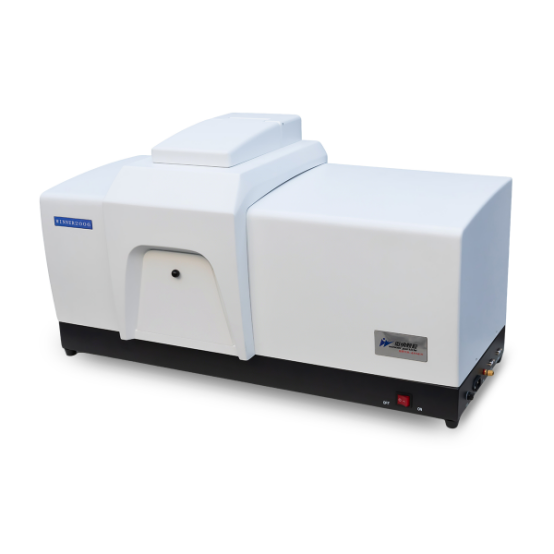- Call us!
- +86 531 8887 6213
- cathy@winner-psa.com
In the research, production and application of graphite materials, laser particle size analyzer is mainly used to characterize the particle size distribution of graphite particles, which is crucial to the performance and application of graphite materials.
1. Particle size detection of natural graphite and artificial graphite
Natural graphite: During the mining and processing process, the original particle size distribution needs to be detected by a laser particle size analyzer to evaluate the quality of the ore and determine the crushing and grinding process parameters. For example, the natural graphite used to prepare the negative electrode material of the battery needs to control the particle size within a specific range (such as 10~30μm) to balance the capacity and cycle performance of the battery.
Artificial graphite: When synthesized through processes such as high-temperature sintering, the particle size distribution directly affects the conductivity, compaction density and processing performance of the material. The laser particle size analyzer can monitor the growth of particles during the synthesis process, optimize process parameters, and ensure that the finished product particle size meets the requirements (for example, the particle size of artificial graphite for lithium-ion batteries is usually controlled at 15~20μm).
2. Grading and quality control of graphite powder
In the production of graphite powder, the laser particle size analyzer can monitor the effect of grading equipment (such as airflow mills and vibrating screens) in real time to determine whether there are problems with excessive coarse or fine particles. For example, graphite powder used in the lubrication field needs to strictly control the coarse particle content (such as > 50μm particles account for <1%) to avoid wear and tear of equipment; while graphite powder used in conductive coatings needs to have a high proportion of fine particles (such as < 10μm particles account for > 80%) to improve conductivity.
3. The influence of graphite particle size on the battery
As the mainstream negative electrode material, the particle size distribution of graphite affects the initial charge and discharge efficiency, cycle life and rate performance of the battery:
Particle size uniformity: If the particle size difference is large, small particles are easy to fill the gap between large particles and increase the compaction density, but it may lead to inconsistent lithium ion diffusion paths and affect the cycle stability; the laser particle size analyzer can detect the span of particle size distribution (such as D10, D50, D90) to help optimize the formula.
Fine particle control: Too many fine particles (<5μm) can easily cause electrolyte consumption and repeated rupture of SEI membrane, resulting in battery capacity attenuation; by monitoring the fine particle ratio through the laser particle size analyzer, the grinding process can be adjusted to reduce its content.
The smaller the graphite particles, the better the rate performance and cycle life, but the worse the first efficiency and compaction density, and vice versa. Therefore, it is very important to detect the particle size distribution of graphite, which is one of the functions of the laser particle size analyzer. A high-performance laser particle size analyzer has the advantages of easy operation, fast test speed, good repeatability and accuracy. This time, Winner2006 is recommended to test the particle size distribution of graphite powder for customers.
Measuring instrument information is as follows:

The video of measuring particles is as follows:
Copyright © Jinan Winner Particle Instrument Stock Co., Ltd. All Rights Reserved | Sitemap
Keywords:
Laser Particle Size Analyzer Spray Particle Size Analyzer Particle Image System Online Particle Size Analyzer Particle Size Analyzer particle size distribution particle size analyzer manufacturer Laser diffraction particle size analyzer particle size malvern particle size analyzer